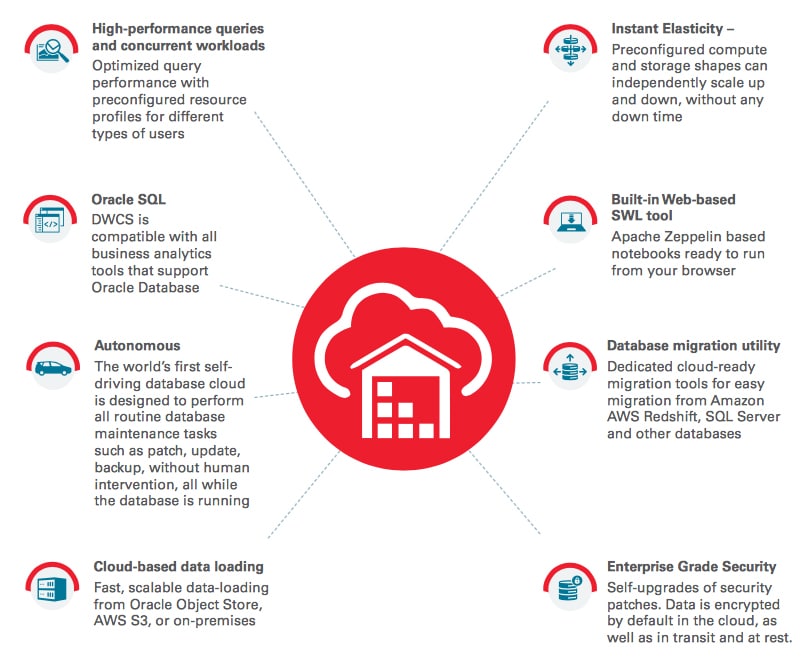
At Oracle Open World London, the company made several announcements. The three key announcements include the availability of Oracle Cloud Data Science Platform. Oracle has created a new database that supports all data. And Oracle has expanded its interoperability partnership with Microsoft.
Oracle announced the availability of its new Oracle Cloud Data Science Platform. This platform centers around machine learning and helping data scientists collaborate on building, training, managing, and deploying ML models. Giving easy access to all teams holds enormous transformational potential. Faster time to develop a project can potentially lead to faster implementation versus dying before production due to the time it takes to finish them.
Capabilities include:
- AutoML automated algorithm selection and tuning automates the process of running tests against multiple algorithms and hyperparameter configurations. It checks results for accuracy and confirms that the optimal model and configuration is selected for use. This saves significant time for data scientists and, more importantly, is designed to allow every data scientist to achieve the same results as the most experienced practitioners.
- Automated predictive feature selection simplifies feature engineering by automatically identifying key predictive features from larger datasets.
- Model evaluation generates a comprehensive suite of evaluation metrics and suitable visualizations to measure model performance against new data and can rank models over time to enable optimal behavior in production. Model evaluation goes beyond raw performance to take into account expected baseline behavior and uses a cost model so that the different impacts of false positives and false negatives can be fully incorporated.
- Model explanation: Oracle Cloud Infrastructure Data Science provides automated explanation of the relative weighting and importance of the factors that go into generating a prediction. Oracle Cloud Infrastructure Data Science offers the first commercial implementation of model-agnostic explanation. With a fraud detection model, for example, a data scientist can explain which factors are the biggest drivers of fraud so the business can modify processes or implement safeguards.
- Shared projects help users organize, enable version control and reliably share a team’s work including data and notebook sessions.
- Model catalogs enable team members to reliably share already-built models and the artifacts necessary to modify and deploy them.
- Team-based security policies allow users to control access to models, code and data, which are fully integrated with Oracle Cloud Infrastructure Identity and Access Management.
- Reproducibility and auditability functionalities enable the enterprise to keep track of all relevant assets, so that all models can be reproduced and audited, even if team members leave.
Oracle has taken databases a step further in a world that wants a one-stop-fits-all approach with a single converged database engine able to meet all the needs of a business. Not only is the database stated to meet all needs, users can leverage new technology trends as well, such as blockchain for fraud prevention, leveraging the flexibility of JSON documents, or training and evaluating machine learning algorithms inside the database.
The converged capabilities in Oracle Database include:
- Oracle Machine Learning for Python (OML4Py): Oracle Machine Learning (OML) inside Oracle Database accelerates predictive insights by embedding advanced ML algorithms which can be applied directly to the data. Because the ML algorithms are already collocated with the data, there is no need to move the data out of the database. Data scientists can also use Python to extend the in-database ML algorithms.
- OML4Py AutoML: With OML4Py AutoML, even non-experts can take advantage of machine learning. AutoML will recommend best-fit algorithms, automate feature selection, and tune hyperparameters to significantly improve model accuracy.
- Native Persistent Memory Store: Database data and redo can now be stored in local Persistent Memory (PMEM). SQL can run directly on data stored in the mapped PMEM file system, eliminating IO code path, and reducing the need for large buffer caches. Allows enterprises to accelerate data access across workloads that demand lower latency, including high frequency trading and mobile communication.
- Automatic In-Memory Management: Oracle Database In-Memory optimizes both analytics and mixed workload online transaction processing, delivering optimized performance for transactions while simultaneously supporting real-time analytics, and reporting. Automatic In-Memory Management greatly simplifies the use of In-Memory by automatically evaluating data usage patterns, and determining, without any human intervention, which tables would most benefit from being placed in the In-Memory Column Store.
- Native Blockchain Tables: Oracle makes it easy to use Blockchain technology to help identify and prevent fraud. Oracle native blockchain tables look like standard tables. They allow SQL inserts, and inserted rows are cryptographically chained. Optionally, row data can be signed to ensure identity fraud protection. Oracle blockchain tables are simple to integrate into apps. They are able to participate in transactions and queries with other tables. Additionally, they support very high insert rates compared to a decentralized blockchain because commits do not require consensus.
- JSON Binary Data Type: JSON documents stored in binary format in the Oracle Database enables 4X faster updates, and scanning up to 10X faster.
Finally, Oracle and Microsoft announced that they are extending their cloud partnership with a new cloud interconnect location in Amsterdam. This new location will allow organizations to share data across applications running in Microsoft Azure and Oracle Cloud. This further expands the Oracle, Microsoft cloud interoperability partnership that the companies announced last year.
Discuss on Reddit
Engage with StorageReview
Newsletter | YouTube | Podcast iTunes/Spotify | Instagram | Twitter | Facebook | RSS Feed

